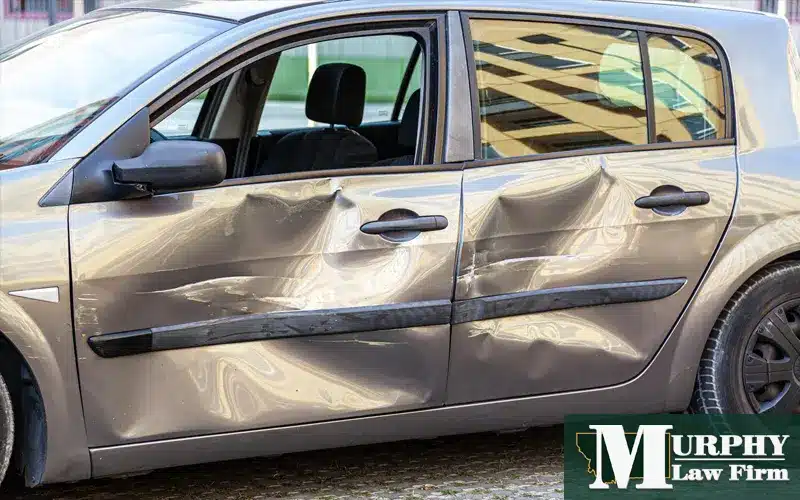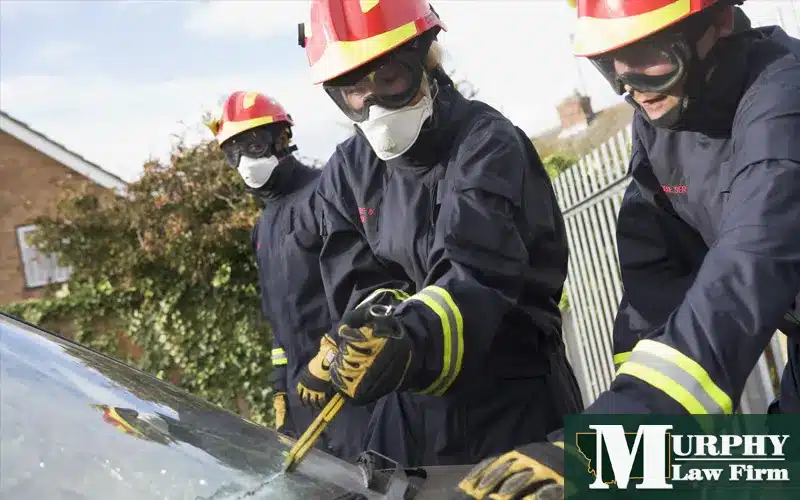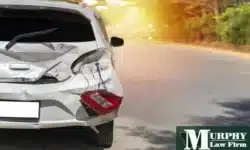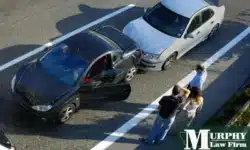
Understand your rights and how to prove fault after a T-bone accident in Great Falls
T-bone accidents, where one vehicle collides with the side of another, present a significant hazard on the streets of Great Falls, Montana, often resulting in severe injuries or wrongful death due to the limited protection offered by the sides of vehicles.
These collisions frequently occur at intersections and are typically the result of failing to yield, running red lights, or other forms of negligent or distracted driving. In the aftermath of such a traumatic event, understanding your rights and the steps necessary to prove fault becomes crucial.
Establishing liability in a T-bone accident requires a detailed analysis of traffic laws, signals, and the actions of each driver involved. For those affected, taking prompt legal action to protect your rights and secure fair compensation is essential for covering medical expenses, lost wages, emotional trauma, and other damages incurred from the crash.
Why is it called T-bone in a car accident?
The term “T-bone” in a car accident refers to the specific collision pattern where the front of one vehicle strikes the side of another, forming a “T” shape at the moment of impact.
T-bone accidents are particularly common at intersections where one vehicle may fail to yield the right of way or runs a red light, leading to a perpendicular collision with another vehicle crossing the intersection.
How common are T-bone accidents?
According to the National Highway Traffic Safety Administration (NHTSA), in 2021 alone, T-bone and sideswipe crashes resulted in 1,184 fatalities and 123,304 nonfatal injuries, accounting for about 16% of accidents in the U.S. that year.
Which side are you most likely to get T-boned?
While many people assume they’re more likely to get hit in a T-bone accident on the passenger side of their car, recent statistics tell a different story. According to NHTSA data from 2021, the majority of side impact crashes involved the left side of the vehicle, with 389,158 left-side collisions reported, compared to 339,942 right-side collisions.
What is the most common injury from a T-bone accident?
While serious injuries can occur in any part of the body due to the nature of a T-bone collision, the most common type of injury associated with these accidents is often blunt force trauma, particularly to the upper half of the body. “Blunt force trauma” refers to injuries caused by a sudden impact without a penetrating object.
In contrast to head-on collisions where occupants face the direction of impact, T-bone collisions impact the side of the vehicle, an area typically less protected than the front. This increases the likelihood of serious injuries to the organs and bones of the person on the affected side of the vehicle.
Additionally, while seatbelts are crucial for saving lives, the sudden stop and forceful impact during a T-bone collision can cause injuries related to the seat belt itself, such as internal injuries from the belt restraining the body.
While blunt force trauma to the upper body might be the most common consequence of a T-bone collision, other potential injuries include the following:
- Back and neck injuries. The sudden twisting or jolting motion during the crash can lead to whiplash and other more serious damage to the spine, back, and neck.
- Head injuries. From concussions to more severe brain trauma, head injuries are a significant concern in T-bone accidents.
- Psychological trauma. The emotional impact of experiencing a severe collision can lead to anxiety, depression, or post-traumatic stress disorder (PTSD).
- Internal injuries. Hidden internal bleeding or organ damage can occur due to blunt force trauma.
If you’ve been involved in a T-bone collision, seeking immediate medical attention is crucial to assessing and treating any potential injuries, regardless of their initial severity.
Common Car Accident Injuries in Montana
Learn about the most frequent catastrophic crash injuries in Montana.
Who is usually at fault in a T-bone accident?
Typically, in a T-bone accident, the driver who failed to yield the right of way or disregarded traffic signals is usually found at fault. This often includes drivers who run red lights or stop signs, execute improper turns, fail to adhere to yield signs at intersections, or are driving while intoxicated.
Fault determination, however, can vary and depends on the specific circumstances of the crash, such as the presence and status of traffic controls, witness testimonies, and local traffic laws. Each case requires a detailed examination to ascertain which party violated the rules of the road leading to the collision.
Can I recover compensation in Montana if I was partially at fault for the accident?
Yes, as long as you weren’t more than 50% at fault, you may still be entitled to compensation, but your final compensation would be reduced by your percentage of fault. Let us explain.
In Montana, fault in car accidents is determined using the modified comparative negligence rule. Under this legal principle, each party involved in an accident can be found partially at fault, with the degree of fault expressed as a percentage.
The amount of compensation an injured party can receive is reduced by their percentage of fault. For example, if a driver is found to be 30% at fault in an accident, their compensation would be reduced by 30%.
Fault is typically assigned based on evidence such as police reports, witness statements, traffic citations, and other relevant information that can shed light on the circumstances leading to the accident. It’s a process that may involve negotiations between insurance companies or, if necessary, legal proceedings where a judge or jury makes the final determination.
Get help from an experienced Montana car accident attorney
In light of Montana’s comparative fault system, it’s essential for drivers involved in T-bone accidents to enlist the services of a seasoned attorney to safeguard their legal rights and reduce their potential liability.
At Murphy Law Firm, our skilled Great Falls car accident lawyers bring to the table more than 75 years of combined expertise in successfully obtaining rightful compensation for car accident victims in Montana.
We understand the complexities of car accident claims and know how to navigate the nuances of state laws to your advantage. Don’t navigate the aftermath of a T-bone collision alone; contact us for a free case evaluation, and learn how we can help maximize your claim.




